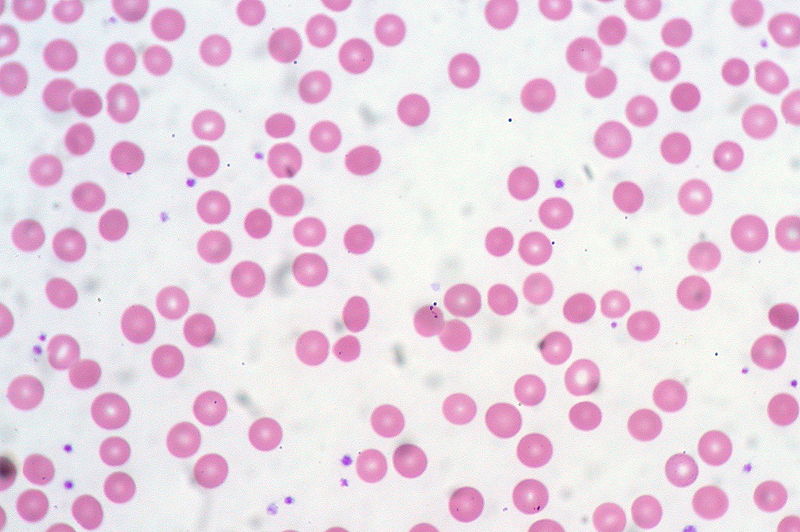Playlist
Show Playlist
Hide Playlist
Anemia of Chronic Disease: Clinical Pathology
-
Slides Anemia of Chronic Disease.pdf
-
Download Lecture Overview
00:00 Now, common signs and symptoms of anemia, which means fatigue and tiredness. 00:04 Now the laboratory values is what you want to pay attention to. 00:07 Let me walk you through this. 00:07 You’re going to find only mildly decreased hemoglobin, not something that you would find as drastic with iron deficiency perhaps. 00:15 Next, the RBCs usually normocytic. Let me stop there. 00:21 Or mildly microcytic. 00:24 Do you understand the significance of that statement? That statement right there tells you anemia of chronic disease may have an MCV less than 80. 00:32 What does that mean to you? Oh, microcytic. 00:36 Or you might have a MCV being between 80 and 100 that puts you in the category of normocytic. 00:43 Under normocytic, interesting enough, it will come under non-hemolytic. 00:50 Remember, with normocytic, your next step to come up with the differential is to ask yourself is this anemia hemolytic or non-hemolytic. 01:01 And so therefore, with anemia of chronic disease, it will be normocytic and it will be non-hemolytic. 01:07 “But, Dr. Raj, you told me earlier that if it is non-hemolytic, that the bone marrow has been suppressed. 01:13 Yeah, that’s exactly what happens in anemia of chronic disease. 01:15 Anemia of chronic disease, some of these cytokines and interleukins that you’re releasing, therefore causes the bone marrow to slow things down. 01:27 So therefore, your patient may appear as normocytic, often. 01:30 Also keep in mind that it may also result in – As we said, lack of iron availability makes you feel? Microcytic. 01:41 Now the RDW, either normal or slightly increased because it kind of behaves like microcytic. 01:47 So these will be rather nonspecific. 01:50 Normal to increased serum ferritin, that is another huge bullet point. 01:57 So two major bullet points thus far that we’ve seen in these discussions. 02:00 Normal to increased serum ferritin and the fact that you then would have also either normocytic or microcytic type of anemias. 02:10 So what’s going on here? "Why might there be an increase in serum ferritin, yet you’re telling, Dr. Raj, that there might be a little bit of a decrease in iron?? How is that possible? Because in iron deficiency, tell me what your ferritin level was? Decreased because there wasn’t any iron in your – Or there is decreased iron availability, maybe due to that female that had menorrhagia. 02:32 Maybe there is that GI bleed or whatever. 02:35 You get my point? So if there’s no iron to begin with, there should be a decrease in ferritin. 02:40 How in the world do we see no decrease in iron or ferritin in anemia of chronic disease? Isn’t that a good question? How is this occurring? Well, this then will take us into our discussion of your acute phase reactants. 02:55 What does an acute phase reactant mean to you? It is an acute event that’s taking place in which your liver is now going to respond by releasing certain substances. 03:04 For example, you’ve heard of C-reactive protein. 03:07 C-reactive protein. 03:10 Guess what that is. 03:11 That’s acute phase reactant. 03:11 Where is it coming from? It’s coming from the liver. 03:14 When would you even consider thinking about seeing C-reactive protein? Inflammation, inflammation, inflammation. 03:22 A big one there would be something like a myocardial infarction in fact. 03:27 That’s a C-reactive protein. 03:29 That is probably the prototype of acute phase reactant, but that is not the acute phase reactant that you’d find with anemia of chronic disease. 03:38 So what is it called? Well, we’ll take a look at the name of it, and it’s called hepcidin. 03:41 Thus far, the main distinguishing feature that we’ve seen between iron deficiency and anemia of chronic disease includes the fact that that ferritin is not decreased in A, C, D.
About the Lecture
The lecture Anemia of Chronic Disease: Clinical Pathology by Carlo Raj, MD is from the course Microcytic Anemia – Red Blood Cell Pathology (RBC).
Included Quiz Questions
Which of the following laboratory values can best differentiate between iron deficiency anemia and anemia of chronic disease in clinical practice?
- Ferritin
- Serum iron
- Mean corpuscular hemoglobin concentration
- Hepcidin
- Mean corpuscular volume
Which of the following categories of mean corpuscular volume is most commonly seen in anemia of chronic disease?
- Normocytic to mildly microcytic
- Always normocytic
- Macrocytic to megaloblastic
- Normocytic to macrocytic
- Significantly microcytic
What is the acute phase reactant most closely associated with anemia of chronic disease?
- Hepcidin
- CRP
- RF
- Fibrinogen
- Albumin
Customer reviews
5,0 of 5 stars
| 5 Stars |
|
5 |
| 4 Stars |
|
0 |
| 3 Stars |
|
0 |
| 2 Stars |
|
0 |
| 1 Star |
|
0 |




